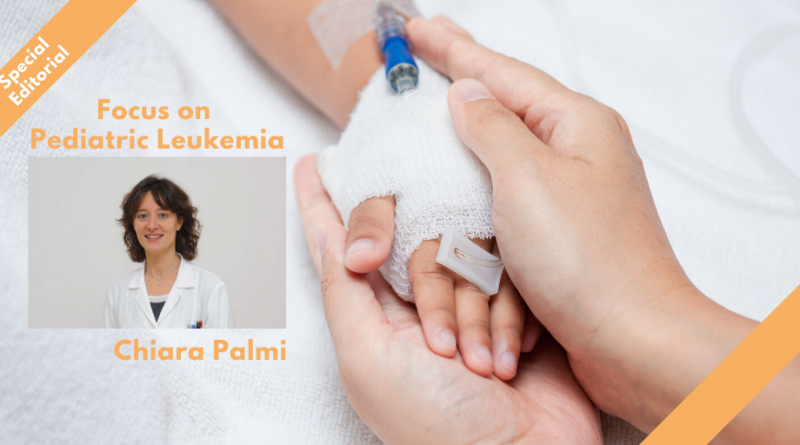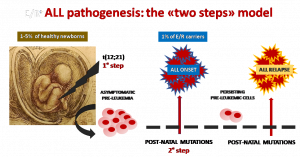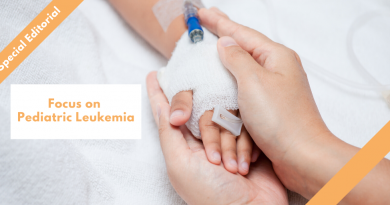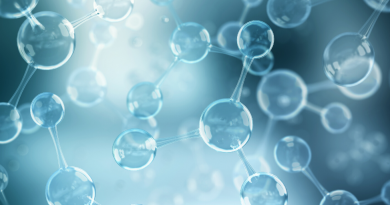Role of Bone Marrow-Mesenchymal Stromal Cells and inflammation in the pre-leukemic phase of ETV6-RUNX1-positive childhood Acute Lymphoblastic Leukemia
What We Know So Far
Childhood acute lymphoblastic leukemia (ALL) is the most common cancer affecting patients in pediatric age, with a frequency of about 350 new cases per year in Italy.
The t(12;21) chromosomal translocation generating the ETV6-RUNX1 (ER) chimeric fusion gene is the most frequent genetic alteration in childhood ALL, occurring in a subgroup of 20-25% of patients, invariably associated with a B-cell precursor phenotype.
The ER fusion gene is generated during fetal hemopoiesis and constitutes the initial event necessary, but insufficient, for the manifestation of leukemia that occurs subsequently only in 1% of cases. In fact, in order to have the onset of the disease, further mutations are necessary that can arise in the baby from a few months up to 15 years after birth. The period of time between the first and subsequent mutations is called "pre-leukemic phase", a clinically silent condition.
Proliferative stress in bone marrow (BM), occurring under inflammatory condition, has been considered as a possible causative agent of the transition from pre-leukemia to overt leukemia.
It has also been demonstrated that ER+ relapses are often de novo leukemias resulting from the occurrence of an independent second hit in the same pre-leukemic cell. Then, it is presumable that the pre-leukemic population is resistant to the conventional therapies.
Aim of the study
The identification of mechanisms that allow the pre-leukemic clone to persist covertly in an individual for several years, probably prone to additional genomic events, are crucial in order to develop strategies for its effective eradication and leukemia prevention.
Progress and Prospects
We recently proposed a model where the concerted action of pro-inflammatory cytokines and bone marrow-mesenchymal stromal cells (BM-MSC) create a selective niche for ER-expressing cells in terms of migration, proliferation and survival. In addition, the inflamed niche predisposes pre-leukemic cells to transformation through increased DNA damage. Overall, our data provide new mechanistic insights in childhood ALL pathogenesis.
The preliminary results are in press in “The British Journal of Haematology”.
The study is one of the winning projects of the call “Biomedical research conducted by young researchers” financed by the Cariplo Foundation in 2018 (project 2018-0339).
Read our other articles on the ETV6-RUNX1-positive pre-leukemic phase:
https://www.ncbi.nlm.nih.gov/pmc/articles/PMC2662549/
https://mcr.aacrjournals.org/content/12/12/1796.long
Chiara Palmi
Virgilio Program Tutor
Senior Researcher at Centro Ricerca Tettamanti, Genetics of leukemia Unit, University of Milano-Bicocca, MBBM Foundation, Monza, Italy.
Head of Genetics of leukemia Unit: Giovanni Cazzaniga





